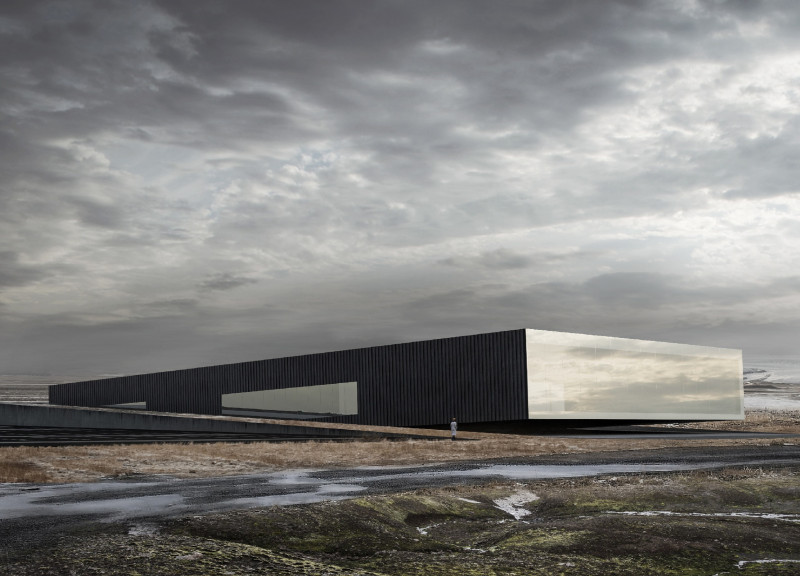5 key facts about this project
The Iceland Volcano Museum is located in the captivating landscape of Iceland, close to the Hverfjall volcano. The design aims to reflect the unique geological features of the area while providing an educational experience focused on volcanic activity. It transforms visitor experiences by guiding them through different environments that enhance their engagement with nature.
Spatial Transformation
Visitors first enter a dimly lit introductory space designed to heighten their sensory awareness. As they move forward, they transition into a bright, open exhibition area filled with natural light. This change in atmosphere is emphasized by the terraced layout of the museum, encouraging movement and exploration. At the end of this journey, a panoramic window reveals stunning views of the surrounding landscape, creating a rewarding visual experience.
Connection to Nature
The museum invites exploration of the volcano crater ring from its lowest point, allowing guests to maintain a respectful distance from the imposing natural elements. This setup fosters a more personal connection with the geological features of the site. Gaps in the concrete walls offer glimpses into an inaccessible void chamber, adding an element of intrigue while connecting visitors to the volcanic environment.
Architectural Approach
As visitors approach the museum, they encounter a solid wall that stands about 2.2 meters high, creating an imposing presence. A minimal gap serves as the only entry point into the building, leading visitors into its depths. This design decision signals a transition from the outside world to the carefully curated experiences found within.
Exhibition Versatility
The exhibition spaces are designed to be flexible, accommodating a variety of configurations based on differing exhibition needs. The foyer includes essential amenities for visitors, such as a reception area and a space for children to play. Additionally, office areas are available for collaborative work. The structure prominently incorporates concrete for its walls and other elements, reinforcing its connection to the geological context of the area.
A noteworthy aspect of the design is the sunken volume that evokes the idea of underground tectonics. This detail creates a dialogue between the natural landscape and the constructed form. Through this thoughtful approach, the museum serves as a platform for understanding the geological processes that shape Iceland's volcanic terrain.




















































